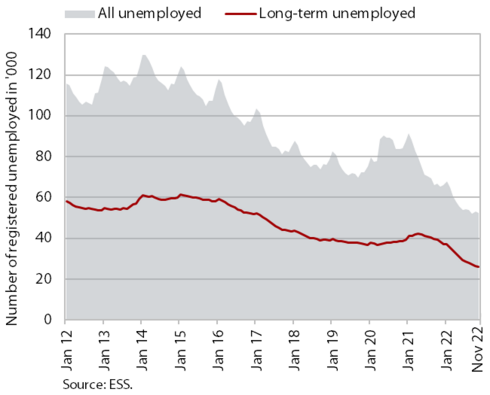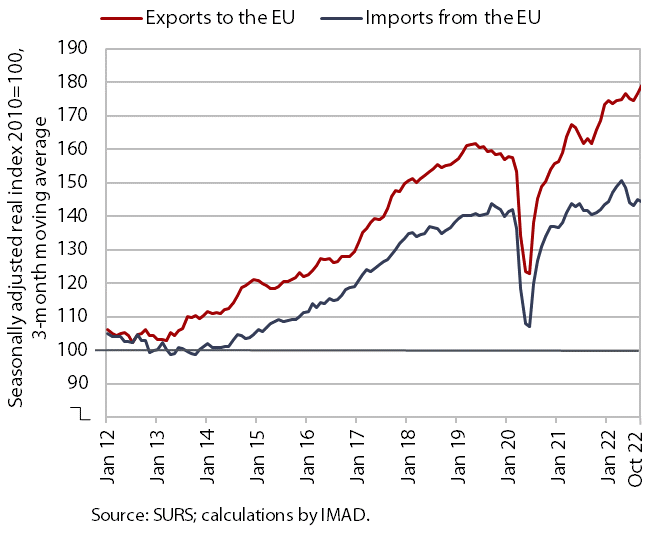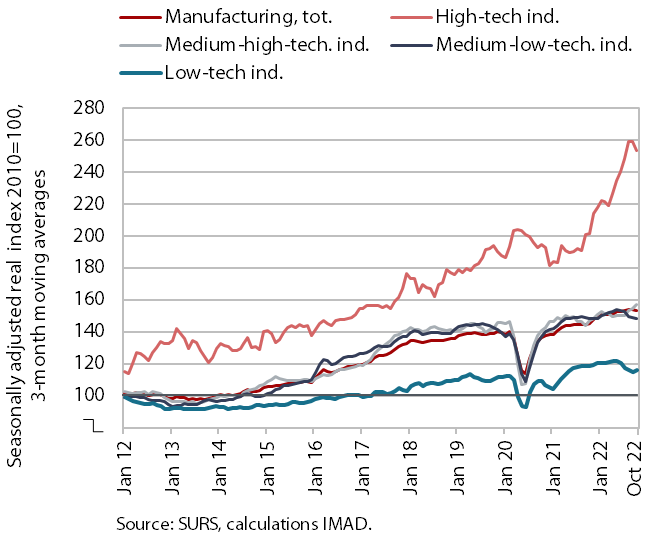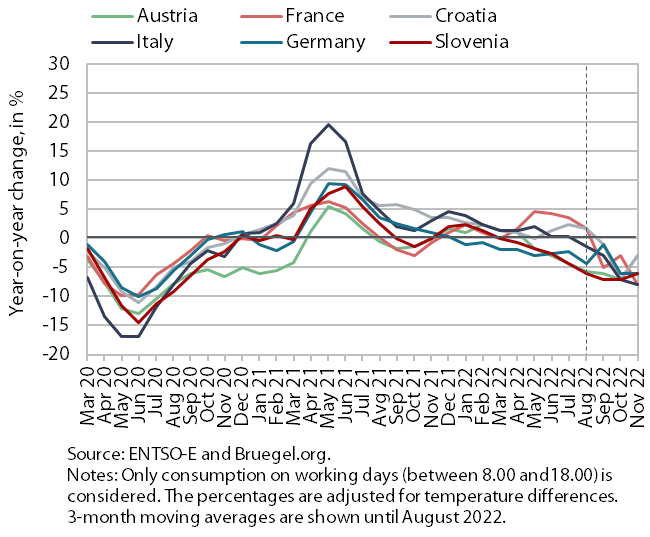Charts of the Week
Charts of the week from 5 to 9 December 2022: number of registered unemployed, trade in goods – in real terms and other charts
In November, the number of registered unemployed continued to decline, with the number of long-term unemployed also decreasing due to high demand for labour and labour shortages. Amid ongoing uncertainty in the international environment, there are signs that activity in export-oriented sectors started to slow at the beginning of the last quarter – real exports of goods to EU Member States, which accounts for more than three quarters of total exports, declined in October, while the volume of production slowed or remained unchanged (seasonally adjusted) in most manufacturing activities, with the exception of high-technology activities. Electricity consumption was lower year-on-year in November, as in several months before. In our estimation, both industrial and household consumption were lower.
Number of registered unemployed, November 2022

According to the seasonally adjusted data, the monthly decline in the number of registered unemployed was slightly larger in November than in the previous four months (-1.6%). According to original data, 52,541 people were unemployed at the end of November, 0.8% less than at the end of October. Unemployment was down 19.6% year-on-year. Under conditions of high demand for labour, which is also reflected in the high vacancy rate, the number of long-term unemployed has also been declining since May last year – their number was almost one third lower year-on-year in November. The number of unemployed people over 50, who are often long-term unemployed, is also declining – in November, their number was one fifth lower than a year ago.
Trade in goods – in real terms, October 2022

Real exports of goods to EU Member States fell for the second month in a row, while imports remained roughly constant. Amid high level of uncertainty in our main trading partners, there have been significant monthly fluctuations in exports and especially imports of goods in recent months, suggesting that the monthly growth in trade in goods has slowed (seasonally adjusted). In the first ten months, exports to EU Member States rose by 6.4% year-on-year and imports by 2.7%. Sentiment in export-oriented activities improved somewhat in November but still remained significantly lower than at the beginning of this year.
Production volume in manufacturing, October 2022

At the beginning of the last quarter, manufacturing output increased slightly, especially in high-technology activities. In all other industry groups, production was lower or similar to the previous month. In the first ten months, their output increased by only slightly more than 2% (in high-technology industries by more than 20%) compared to the same period last year. This was mainly due to lower year-on-year output in the manufacture of motor vehicles (due to supply chain disruptions, lower demand) and in some energy-intensive industries (paper industry, manufacture of basic metals and rubber products), and lower activity in the repair and installation of machinery and equipment.
Electricity consumption, November 2022

Electricity consumption was 6% lower year-on-year in November. In our estimation, both industrial and household consumption were lower. Due to high electricity prices, energy-intensive industry in particular has reduced its production volume and possibly improved its energy efficiency. The lower household consumption compared to last year is most likely due to less people working from home. Compared to last November, consumption was also lower in our main trading partners (-3% in Austria and Croatia, -6% in Germany and -8% in France and Italy).
